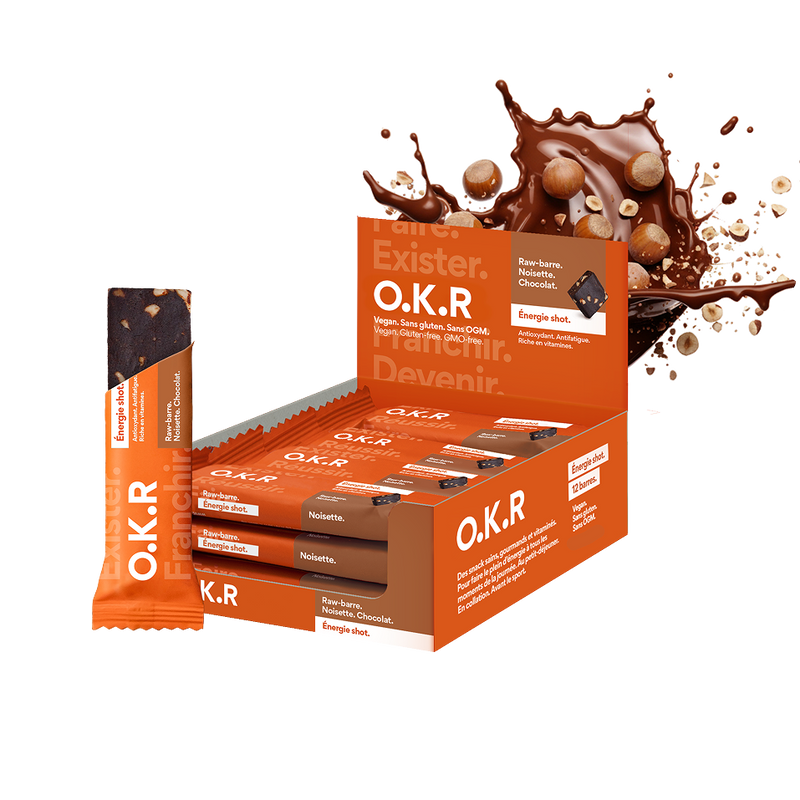What is dietary fiber?
Dietary fiber is a carbohydrate that is not digested by the digestive enzymes in our intestines (stomach and small intestine). Fiber is a satiating nutrient because it provides a rapid and lasting feeling of fullness. There are two types of fiber: soluble fiber and insoluble fiber.
Soluble fiber.
Soluble fibers have the particularity of dissolving in water. Upon contact with water, the fibers will form a viscous gel. This will slow down the arrival of the food bolus (meal) in your intestine. This phenomenon leads to a slowdown in the absorption of these carbohydrates, which therefore helps limit the rise in blood sugar (glucose level in the blood) after your meal.
Insoluble fiber.
Conversely, insoluble fibers can absorb up to 25 times their weight in water. They act like small sponges in the intestine: by gorging themselves with water, they increase the volume of the food bolus (mixture obtained after chewing). This phenomenon exerts mechanical pressure on the walls of the digestive tract, particularly the stomach. It is this distension of the stomach's volume that promotes satiety by reproducing the effect of a large meal. In addition, insoluble fibers help regulate intestinal transit.
Reminder.
Soluble fiber slows the absorption of carbohydrates and therefore allows for better regulation of blood sugar. Insoluble fiber will allow a feeling of rapid and lasting satiety thanks to its ability to absorb a lot of water.
What is the role of dietary fiber?
The main role of fiber is to regulate transit, but it also plays a role in the bioavailability of nutrients, that is, in their ability to be absorbed by the intestine. When we say that a molecule (vitamins, minerals, or others) has good availability, this means that it is easily absorbed by the body. However, fiber consumption decreases the bioavailability of the nutrients you consume. Indeed, the gel formed by soluble fiber, which lines the intestinal walls, complicates the encounter of nutrients with the intestinal wall and digestive enzymes. Similarly, the acceleration of transit caused by insoluble fiber reduces the contact time between nutrients and digestive enzymes and therefore slows their absorption. What are the consequences for each family of nutrients? Proteins: Their absorption is reduced. Lipids: Fiber decreases the absorption rate of cholesterol and triglycerides. They are therefore hypocholesterolemic and hypotriglyceridemic, that is to say, they reduce the amount of lipids and cholesterol in the blood. Carbohydrates: By slowing down the absorption of carbohydrates, fiber reduces the glycemic response that follows your meal and therefore avoids excessive insulin peaks that tire the pancreas. This overall reduction in the glycemic index of your meal thanks to fiber will also help prolong the feeling of satiety by spreading the absorption of carbohydrates over several hours. Therefore, adopting a diet rich in fiber allows you to reduce your food intake and can promote weight loss.
What are your daily fiber needs?
The current average consumption of dietary fiber in France is well below health recommendations. According to the NutriNet Santé study, the average French man consumes 20g of fiber per day compared to 18g for women, while ANSES recommendations recommend a daily consumption of 25-30g of fiber, at least half of which should be in soluble form. To maximize the effectiveness of fiber, it is important to combine its consumption with adequate hydration because fiber acts under the effect of water.
What foods are high in fiber?
They are mainly found in cereals and cereal products, especially whole grains, dried fruits and vegetables, fresh fruits and vegetables, oilseeds (avocado, coconut, olives) and oilseeds (almonds, walnuts, flax seeds, sesame, etc.) and in starchy fruits (chestnuts).
Did you know?
Grain products primarily provide insoluble fiber. The more refined the grain, the lower its fiber content. The fiber in fresh fruits and vegetables is approximately 1/3 soluble, compared to 1/4 for dried vegetables. Insoluble fiber is preferred for constipation, and conversely, soluble fiber is effective for loose stools.
With an average of 11g of fiber per serving, OKR meals provide you with a daily intake of soluble and insoluble fiber and help you feel full for longer. The main sources of fiber in OKR meals are gluten-free oat flour, pea protein, acacia fiber, and corn fiber.
What are some tips for easily increasing your fiber intake?
Few people manage to reach the minimum recommended intake of 25 grams of fiber per day. Here are some tips to easily increase your fiber intake.
Choose whole grains.
Whole grains contain more fiber than "simple" grains. So, opt for whole-grain pasta, brown rice, whole wheat, or even oat or buckwheat. A bowl of oatmeal with almond milk and fresh fruit, for example, is an excellent fiber-rich breakfast.
Add fiber to your salads or yogurts.
Nothing could be simpler than adding flax or chia seeds to your salads or yogurts to enrich your meals with fiber and also omega 3.
Eat raw vegetables and fresh fruits.
All fruits contain fiber. Their skins are also extremely rich in fiber, so don't hesitate to eat your (washed) fruit with the skin on to get the most out of it! Choose raw fruits and vegetables. Once cooked, they lose up to half of their fiber content.
Fibers and cancer prevention.
Reducing the contact time of nutrients in the intestine limits their absorption by the body. Indeed, in the digestive tract, fiber swells and traps certain toxic molecules for the body, allowing them to be evacuated through the stool. This cleansing action helps reduce the risk of digestive cancers such as colon cancer.
Is there a limit to how much dietary fiber I should not exceed per day?
It is recommended to consume between 30 and 45g of fiber per day, half of which should be soluble and the other half insoluble. Excess fiber can lead to intestinal discomfort.
Should you eat fiber if you're trying to gain weight?
Of course, you need to eat fiber even if you want to gain weight. Although fiber is known for its appetite suppressant effect, it's important to continue eating a varied and balanced diet while increasing the size of your meals. Fiber is mainly found in fruits, vegetables, and grains, which you should continue to consume even when gaining weight. Gaining weight doesn't have to be about sugar and fat.
In summary.
There are two types of fiber with different actions and roles: soluble and insoluble fiber. They play a role in transit and also in the bioavailability of nutrients. The daily fiber intake recommended by ANSES is 25 to 30 grams. Fiber is found in large quantities in plant-based foods such as cereals, fruits, and vegetables.













